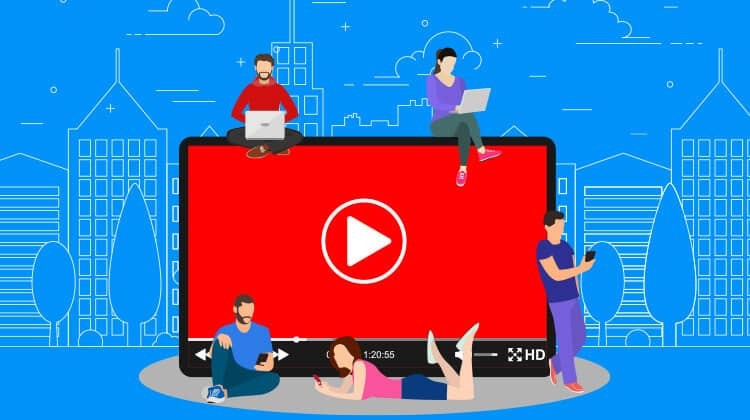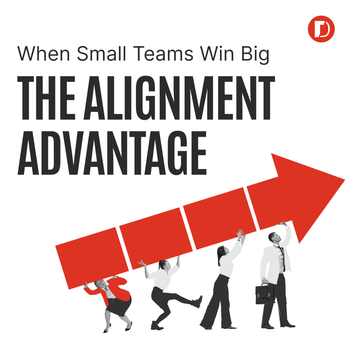5 Ways to Leverage Video Content in Your Paid Strategy
by Ana Gotter • January 22, 2020
Here at Disruptive, we love video content. It’s great for organic marketing, sharing video content on social media, our websites, and even increasingly in emails. It should also be leveraged regularly in paid campaigns, too.
There are some incredibly strong benefits that video content offers when it comes to paid advertising, including the following:
- You can create retargeting campaigns off of past views, allowing you to reach warmer audiences effectively even if they’ve never clicked to your site or filled out a lead form.
- Your audience wants to see them. Videos are attention-grabbing and can stop users while they’re scrolling through feeds or websites.
- Video doesn’t need to be expensive; you can create multiple short videos on a low budget and use them to effectively get your point and narrative across quicker than text could.
Video is also flexible. There are so many ways that you can use it to advance your campaigns, connecting with your audience in more effective ways and maximizing your ROI.
Looking for new ways to leverage video content in your paid strategy? Let’s take a look at 5 foolproof strategies that will help you flesh out strong, high-performing video ads for any campaign you’re working on.
1. Create Videos Designed to Introduce Your Brand to Consumers
When it comes to telling a story and conveying a lot of information very, very quickly, there’s no medium like video. Nobody wants to read multiple paragraphs of text, especially when a paid ad campaign pops up, so video is the way to go when you want to share your brand story and appeal to colder audiences. This is especially true since new, cold audiences are much more likely to watch a video than they are to click or take other actions, and you can create retargeting campaigns on views alone.
Whether you’re introducing your brand to consumers by sharing your origin story or simply providing an overview of what your product or service can do and the value that it offers, introduction videos are a great choice for paid campaigns.
https://www.facebook.com/IntuitQuickBooks/videos/491196434622183/
The video above from Quickbooks is a great example. It immediately appeals to business owners, starting off strong by mentioning that you should be running your business smarter, not harder. They use humor as they go through multiple different settings, reminding personal trainers, contract workers, and pet groomers that invoicing software is as important for them as anyone else in a conventional business setting. It works to attract a large and diverse audience, and it does so in an entertaining way.
2. Demonstrate How Products and Services Work
Video really is the best way to show someone how something works; descriptions will always be second best to a moving, dynamic visual.
Showing potential customers how a product or service works can demonstrate how easy, effective, or valuable it is to them, capturing their interest. It shows them that this really would work for them, and that the learning curve isn’t so bad. This is the most popular way to leverage video content in your paid strategy, and it’s because it works.
The video below from SEMrush would make for a great ad for warm audiences. It demonstrates how to use a specific type of report, and it does so in-depth. The platform has an enormous number of different features, but a close up look at one allows users to see how user-friendly and intuitive the platform is.
https://www.facebook.com/SEMrush/videos/2426415550931422/
You can create multiple videos showing different use cases for each product that you want to promote, and split test them accordingly.
3. Promote Brand-Building Content
Those brand stories can be valuable when you’ve got interested audiences that you want to nurture into customers, and all you need is a little more relationship building.
Brand stories that are shown to coolish, warmish audiences can be an effective choice, especially if you’re opting for a content-heavy funnel that really focuses on relationship building instead of trying to drive an immediate sale.
https://www.facebook.com/KitchenAid/videos/vl.1134026763327330/10154727017713993/?type=1
This example from KitchenAid starts off a little on the slow side, but the video strategy is solid. The subject of the video talks about why he loves Sydney, and how he found his creative identity with food. They show him using the distinct KitchenAid mixer, and this story is memorable.
Most other video types on this list will be used more heavily, but stories like this can be used at multiple stages of the funnel to create a memorable connection with your potential customers, including towards the beginning of the funnel.
4. Create Product Spotlights
When users are far enough in the funnel to be close to purchasing, a solid bet is to promote individual products and services. You can do this with a single video ad, or by featuring multiple products in their own videos in a carousel ad.
Either way, create short, simple videos for each product that you want to promote. This can be the difference between seeing an ad that details how Lush hand makes all their products and thinking “cool” and seeing a specific ad for a specific product and going “oh yeah, I really do need that cleanser, I should try it.”
These videos do not have to be expensive. Something simple like the example here can work extremely well. Show the product up close, use some background animation to capture user attention, and list the different benefits.
https://www.facebook.com/lushcosmetics/videos/544917556366725/
Product spotlights will help you drive fast sales on specific products. Make sure that you’re using them whenever possible for high-value products, time-sensitive products, and brand new products that your customers may not know about. All of these options can be used to convert warm audiences and re-engage current customers, too.
5. Create Educational Videos for Content Funnels
Content marketing and paid advertising typically exist in two separate worlds, but that doesn’t mean that they have to.
Paid video is an exceptional way to reach new audiences on different platforms, grab their attention, and get them to your site to learn more. This can bring new users into your content funnel, which can work just as well as a paid ad funnel.
Educational videos are a great use for this purpose. All you need to do is create a few short videos that are focused on content and the sharing of information, and then let people know that they can find out more if they click. Take them to the full blog post, white paper, or report. You can take them straight to a lead magnet they need to sign up for, but even sending them to free blog posts which later sends them to a lead magnet works, too.
These videos can be short. Think 15 seconds or less, and sharing a few updates from your latest case study, and then promising all the details once you click. The videos can also be longer and made to share actionable information, and then drive traffic to their blog, which Social Media College does below.
https://www.facebook.com/smcconnect/videos/2450589338510647/
Final Thoughts
If you’ve been waiting to incorporate video content in your paid strategy on any platform, now is the time to start testing it out. Many brands are worried about the cost involved in creating video, but as we’ve said above, you really don’t need to dish out thousands of dollars to create a single video ad if it’s not in the budget.
There are plenty of options to choose from when it comes to what types of videos you want to create and how you want to incorporate them in your campaigns, so start small and work your way up if needed.
Need a little help running your video ad campaigns (or any ad campaigns?). We can help! Learn more about what we do here.
What do you think? How do you leverage video content in your paid strategy? What types of video work best for you? Share your thoughts and questions in the comments below!




